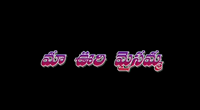Gu?a depending on the context means "string, thread, or strand", or "virtue, merit, excellence", or "quality, peculiarity, attribute, property".
The concept is originally notable as a feature of Samkhya philosophy, though possibly a later feature of it. The gunas are now a key concept in nearly all schools of Hindu philosophy. There are three gunas, according to this worldview, that have always been and continue to be present in all things and beings in the world. These three gunas are called: sattva (goodness, constructive, harmonious), rajas (passion, active, confused), and tamas (darkness, destructive, chaotic). All of these three gunas are present in everyone and everything, it is the proportion that is different, according to Hindu worldview. The interplay of these gunas defines the character of someone or something, of nature and determines the progress of life.
In some contexts, it may mean "a subdivision, species, kind, quality", or an operational principle or tendency of something or someone. In human behavior studies, Guna means personality, innate nature and psychological attributes of an individual.
Like all Sanskrit technical terms, gu?a can be difficult to summarize in a single word. Its original and common meaning is a thread, implying the original materials that weave together to make up reality. The usual, but approximate translation in common usage is "quality".
Contents
Terminology
Guna appears in many ancient and medieval era Indian texts. Depending on the context, it means:
- string or thread, rope, sinew, chord (music, vowel phonology and arts literature)
- virtue, merit, excellence (dharma and soteriological literature)
- quality, peculiarity, tendency, attribute, property, species (sastras, sutras, the Epics, food and analytical literature)
- The root and origins
Gu?a is both a root and a word in Sanskrit language. Its different context-driven meanings are derived from either the root or the word. In verse VI.36 of Nirukta by Y?ska, a 1st millennium BC text on Sanskrit grammar and language that preceded Panini, Gu?a is declared to be derived from another root Ga?a, which means "to count, enumerate". This meaning has led to its use in speciation, subdivision, classification of anything by peculiarity, attribute or property. This meaning has also led to its use with prefixes such as Dviguna (twofold), Triguna (threefold) and so on.
In another context, such as phonology, grammar and arts, "Gu?a-" takes the meaning of amantrana (?????????, addressing, invitation) or abhyasa (??????, habit, practice). In the Mahabharata Book 6 Chapter 2, the meaning of guna similarly comes in the sense of addressing each part (the root implying amantrana), and thereby it means avayava (????, member, subdivision, portion). In Sanskrit treatises on food and cooking, guna means quality, tendency and nature of ingredient. Ancient South Indian commentators, such as Lingayasurin, explain that the meaning of guna as "thread, string" comes from the root guna- in the sense of repetition (abhyasa), while the Telugu commentator Mallinatha explains the root guna- is to be understood in Sisupalavadha as amredana (???????, reiteration, repetition). Larson and Bhattacharya suggest that the "thread" metaphor relates to that which connects and runs between what we objectively observe to the tattva (??????, elementary property, principle, invisible essence) of someone or something.
In the context of philosophy, morality and understanding nature, "Guna-" with more dental na takes the meaning of addressing quality, substance, tendency and property. In abstract discussion, it includes all hues of qualities – desirable, neutral or undesirable; but if unspecified, it is assumed with good faith to be good and divine in Indian philosophy. Thus, Gu?i from the root "Gu?a-" means someone or something with "divine qualities", as in Svetasvatara Upanishad hymn VI.2.
The gunas under various philosophies
Innate qualities and tendencies are key ancient concepts in Indian literature. Maitrayaniya Upanishad is one of the earliest texts making an explicit reference to Hindu trinity of Brahma, Vishnu and Shiva and linking them to their Guna – as creator/activity, preserver/purity, destroyer/recycler respectively. The idea of three types of guna, innate nature and forces that together transform and keep changing the world is, however, found in numerous earlier and later Indian texts.
Samkhya school of Hinduism
In Samkhya philosophy, a gu?a is one of three "tendencies, qualities": sattva, rajas and tamas. This category of qualities has been widely adopted by various schools of Hinduism for categorizing behavior and natural phenomena. The three qualities are:
- Sattva is the quality of balance, harmony, goodness, purity, universalizing, holistic, constructive, creative, building, positive, peaceful, virtuous.
- Rajas is the quality of passion, activity, neither good nor bad and sometimes either, self-centeredness, egoistic, individualizing, driven, moving, dynamic.
- Tamas is the quality of imbalance, disorder, chaos, anxiety, impure, destructive, delusion, negative, dull or inactive, apathy, inertia or lethargy, violent, vicious, ignorant.
In Indian philosophy, these qualities are not considered as present in either-or fashion. Rather, everyone and everything has all three, only in different proportions and in different contexts. The living being or substance is viewed as the net result of the joint effect of these three qualities.
According to Samkya school, no one and nothing is either purely Sattvik or purely Rajasik or purely Tamasik. One's nature and behavior constitute a complex interplay of all of all three gunas, in varying degrees. In some, the conduct is Rajasik with significant influence of Sattvik guna; in some it is Rajasik with significant influence of Tamasik guna, and so on.
The balance of Gunas of everything and everyone can change and does. However, change in one quality faces inertia from other two qualities in Indian worldview. Change needs internal or external influence or reinforcement, as knowledge and force to transform. The force to change comes from the Rajas guna, the Sattva guna empowers one towards harmonious and constructive change, while Tamas guna checks or retards the process.
In Indian mythology, Vishnu is envisioned with more Sattva, Brahma with more Rajas, and Shiva seen with all three Gunas.[20]
Nyaya school of Hinduism
In Nyaya (logic) school of Hinduism, there is extensive debate on what Guna means, and whether quality is innate, subjective or describable. Early scholars of this school identified 17 qualities, which later scholars expanded to 24 gu?as. Different scholars of this school list the 24 differently; for example, Bhasarvajna disallows 6 of the 24 commonly accepted by the ancient scholars.[10] The most commonly accepted list is: color, taste, smell, touch, number, contact, disjunction, farness, nearness, dimension, separateness, knowledge, pleasure, frustration, desire, hatred, effort, weight, fluidity, viscosity, dispositional tendency, merit, demerit, and sound.[24]
Nyaya school considers quality as non-repeatable, a conceptual theme that is not found in Western philosophy on "quality" where it is presumed to be repeatable. It is also not found in some parallel schools of Hinduism. Repeatability means, that the white in one object is same as white in other object, and white means the same thing. Nyaya scholars hold that "whiteness" is a guna of "white", but that is different from "whiteness" of an object or living being. To them, white has many hues and the "whiteness" is subjective.[24]
In Laksanavali, an ancient Indian text by Udayana, Guna is discussed with more nuance. For example, he writes, "quality of earth" is specific only if it meets three conditions: it occurs in earth, does not occur in anything that is not earthy, and be a distinctive quality that cannot be described as combination of other qualities.[25]
Vaisheshika school of Hinduism
In Vaisheshika school of Hinduism, which is most related to Nyaya school, Guna is considered as one of the pad?rtha (category) of relations. It states that our relational awareness, understanding and judgments of a person and anything in the world is relational. All relations, holds this school of Hinduism, is dyadic between anuyogin (referend) and pratiyogin (referent).[26] Inherence (samavaya) is one of its seven categories of relations, as is quality (guna), being (bhava), genus (samanya), species (vishesha), substance (dravya) and motion/action (karman). Unlike Vaisheshika, Nyaya considers inherence as subset of guna (quality).[26]
Gangesha, a Nyaya school scholar, suggests a somewhat different theory, stating that our awareness is of two types – true awareness and false awareness. True awareness is produced when we seek to observe some excellence (guna) in its cause, while false awareness results from observing fault (dosha) in its cause. In other words, in Gangesha's perspective, the observer's state of mind and attitude affects relational awareness.[27]
Bhagavad Gita
Chapters 3, 7, 13, 14, 17 and 18 of Bhagavad Gita discuss Guna.[28] Verse 17.2 refers to the three Guna – sattvic, rajasic and tamasic – as innate nature (psychology or personality of an individual).[29][30] Sattvic guna is one driven by what is pure, truth, compassionate, without craving, doing the right because it is right, positive and good. Tamasic guna is one driven by what is impure, dark, destructive, aimed to hurt another, contemptuous, negative and vicious. Rajasic guna is one that is ego-driven, out of personal passion, active, ostentatious, seeking the approval of others.[28][30]
In Chapters 17 and 18, Bhagavad Gita illustrates various items and actions by their three Guna. For example, three types of charity are discussed, and what makes charity as Sattvic, Rajasic or Tamasic. Similarly, food, relationships, knowledge and actions are detailed in terms of the three Guna.[28] In Chapter 18, for example:[31]
????? ??????????????????? ????? ? ????????????? ???? ?????????????????????? ????
????? ?????????? ???? ????????? ?? ???? ? ??????? ????????? ???????????????? ????
???????? ????? ?????????????? ? ??????? ? ???????????? ???? ????????????????? ????Action that is virtuous, thought through, free from attachment, and without craving for results is considered Sattvic; Action that is driven purely by craving for pleasure, selfishness and much effort is Rajasic; Action that is undertaken because of delusion, disregarding consequences, without considering loss or injury to others or self, is called Tamasic.
—?Bhagavad Gita, Chapter 18, verses 23–25 [31]
Similarly, knowledge that is attached to object of action, without concern for understanding the cause, without concern for purpose or significance, is Tamasic knowledge; knowledge that is segregated, that considers everything unconnected, individualistic and meaningless is Rajasic; knowledge that sees one being in all beings, that seeks the whole, a unity in diversity, and similarities in the divided components is Sattvic.[32]
Guna in theory of ethics
Guna is one of the four important elements in the framework of ethical theories in Indian philosophy.[5][33] Bommer et al. suggest that ethical/non-ethical behavior is an outcome of individual attributes, personal environment, social environment and institutional rules and laws.[34] Guna theory is the ancient Indian philosophy on individual attributes, while the theories of Dharma and Ashramas address the personal and social environment, as well as part of its institutional framework. Guna theory, states Crawford,[33] represents a hierarchical theory of values, where the relative order of hierarchy is suggested to vary within each individual along with the relative proportion of each guna. The interplay of three gunas affect an individual's values, and in Hindu worldview, these values affect individual's actions, as well as the happiness and serenity experienced by the individual.[4][35][36] The gunas are not considered as static and set. Hindu literature, such as the Bhagavad Gita, state it to be dynamic and changeable with knowledge, introspection and understanding of sva-dharma. Realizing one's sva-dharma and Self, is emphasized in Indian ethical theories. The highest state of existence and bliss, in Advaita school of Hinduism for example, is jivanmukti (Self realization) and moksha.[37][38]
Guna theory's perspective on values constituting human personality has uniqueness yet is congruent with other ethical theories.[39]
Request Movie Now
Watch movie Guna online on Amazon
Watch movie Guna online
Watch The Movie On PrimeKismat (1968) Full HD Movie Download
.jpg)
Navagraha Full HD Movie Download

Aadmi (1978) Full HD Movie Download
.jpg)
Chhoti Bahu Full HD Movie Download

Isi Ka Naam Zindagi Full HD Movie Download

Raajneeti Full HD Movie Download

Shaadi Ke Baad Full HD Movie Download

Dil Dosti etc. Full HD Movie Download

Dhan Dhana Dhan Goal Full HD Movie Download

Khazana (1987) Full HD Movie Download
.jpg)
8 Million Dollars Full HD Movie Download

Valentines Night (2012) Full HD Movie Download
.jpg)
The Great Gatsby Full HD Movie Download

Patnam Vachina Pativratalu Full HD Movie Download

Palleturi Bava Full HD Movie Download

Alludu Kosam Full HD Movie Download

Gali Medalu Full HD Movie Download

Maavoori Maisamma Full HD Movie Download

Mere Brother Ki Dulhan Full HD Movie Download

Mere Dad Ki Maruti (2012) Full HD Movie Download
.jpg)
Vijay Full HD Movie Download

Download latest Movie from bollywood
- 1> baaghi 3
- 2> THE SKY IS PINK MOVIE FULL STORY AND REVIEW
- 3> Luka Chuppi
- 4> TO ALL THE BOYS I’VE LOVED BEFORE
- 5> Kabir Singh
- 6> Street Dancer 3D
- 7> Simmba
- 8> Gone Girl
- 9> The Girl Who Lived
- 10> Ludo
- 11> DILWALE DULHANIA LE JAYENGE
- 12> GUILTY
- 13> The Godfather
- 14> Adventures of Rusty
- 15> Sooryavanshi
- 16> Satyameva Jayate 2
- 17> Thappad
- 18> Bhool Bhulaiyaa 2
- 19> KGFChapter 2
- 20> Mardaani 2
- 21> Pinjar
- 22> Shivaji maharaj
- 23> Ek Villian 2
- 24> Hungama 2
- 25> Divergent
- 26> Mumbai Saga
- 27> The Internship
- 28> HIT (telugu)
- 29> Panga
- 30> The perfect date
- 31> 16 December
- 32> Gopala Gopala (Telugu)
- 33> Brahmastra
- 34> Gangubai Kathiawadi
- 35> Manmadhudu
- 36> Nenu local
- 37> Mahanati
- 38> Shatamanam bavathi
- 39> Lagaan
- 40> After
- 41> MOM
- 42> Shamshera
- 43> Raguvaran BTech
- 44> Khakee
- 45> The villain
- 46> OM
- 47> Mr. perfect
- 48> Bueatifull mind
- 49> Hichki
- 50> Gabbar Singh
- 51> Jogi
- 52> Before Sunrise
- 53> Before Sunset
- 54> Before Midnight
- 55> The Big Bull
- 56> Top Gun: Maverick
- 57> The Purge
- 58> The Sky is Pink
- 59> Laxmmi Bomb
- 60> Sadak 2
- 61> Sufna
- 62> Prithviraj
- 63> PK
- 64> Coolie No 1(2020)
- 65> Black Widow
- 66> Dear Zindagi
- 67> Dil Bechara
- 68> PHIR HERA PHERI
- 69> WAR
- 70> Dostana
- 71> RRR: Roudram Ranam Rudhiram
- 72> Maidan
- 73> Dabbang 3
- 74> Chhalaang
- 75> life as we know it
- 76> SherShaah
- 77> Sandeep Aur Pinky Faraar
- 78> Event Horizon
- 79> 83
- 80> Radhe: Your Most Wanted Bhai
- 81> Gunjan Saxena: The Kargil Girl
- 82> Mr India
- 83> Vivah
- 84> Anokha Bandhan
- 85> Ghost
- 86> Bhoot: Part One - The Haunted Ship
- 87> Haseen Dilruba
- 88> Laal Singh Chaddha
- 89> Qismat
- 90> Rajput
- 91> Drive
- 92> Dil Chahta Hai
- 93> Dil Ki Baazi
- 94> Dil Ka Rishta
- 95> Teesri Manzil
- 96> Dil
- 97> Love Aaj Kal
- 98> Khaali Peeli
- 99> Bunty Aur Babli 2
- 100> Atrangi Re
- 101> Gulabo Sitabo
- 102> Jodi
- 103> Suraj Pe Mangal Bhari
- 104> Deewana
- 105> Attack
- 106> Sardar Udham Singh
- 107> Toofan
- 108> THE LOVEBIRDS
- 109> Jersey
- 110> Ginny Weds Sunny
- 111> Thalaivi
- 112> Shiddat
- 113> Angels vs Zombies
- 114> Koi Mil Gya
- 115> Thank God
- 116> Bhuj: The Pride of India
- 117> Hum Aapke Hain Kaun
- 118> The Platform
- 119> Bird Box
- 120> Roohi Afzana
- 121> Torbaaz
- 122> Nikamma
- 123> World War Z
- 124> Extraction
- 125> Train to Busan
- 126> Life of Pi
- 127> SHAADI MEIN JROOR AANA
- 128> Himmat Aur Mehnat
- 129> To All The Boys: P.S. I Still Love You
- 130> Mimi
- 131> Good Newwz
- 132> Shubh Mangal Zyada Saavdhan
- 133> Raabta
- 134> Harry Potter and the Philosopher's Stone
- 135> Harry Potter and the Chamber of Secrets
- 136> Chhapaak
- 137> War of the Worlds
- 138> Harry Potter and the Prisoner of Azkaban
- 139> Harry Potter and the Goblet of Fire
- 140> MURDER MYSTERY
- 141> Shakuntala Devi
- 142> Bachchan Pandey
- 143> Jayeshbhai Jordar
- 144> Sheer Qorma
- 145> Saina
- 146> 'O' Pushpa I hate tears
- 147> Kedarnath
- 148> MS Dhoni The Untold Story
- 149> Chhichhore
- 150> Badhaai Ho
- 151> Unstoppable
- 152> Oz the Great And Powerful
- 153> The Girl on the Train
- 154> Haathi Mere Saathi 2020
- 155> The Conjuring: The Devil Made Me Do It
- 156> Gandhi Se Pehle Gandhi
- 157> The Song of Scorpions
- 158> Srimanthudu
- 159> Hello Guru Prema Kosame
- 160> Beauty and The Beast
- 161> Black Panther
- 162> Charlie and the Chocolate Factory
- 163> Bole Chudiyan
- 164> Fidaa
- 165> Duvvada Jagannadham
- 166> Bruce Lee: The Fighter
- 167> Hyper
- 168> Yaara
- 169> Red (2020)
- 170> Shivam
- 171> That Is Mahalakshmi
- 172> Nishabdham
- 173> Aashram 2020 web series
- 174> Laxmii
- 175> Mismatched
- 176> STUDENT OF THE YEAR 2
- 177> NAIL POLISH
- 178> Ramprasad Ki Tehrvi
- 179> KAAGAZ
- 180> 12 o Clock
- 181> The Power
- 182> bolo hau
- 183> Tribhanga
- 184> JAMUN
- 185> Madam Chief Minister
- 186> Maasaab
- 187> Aadhaar
- 188> Tanhaji
- 189> Bhaagi 3
- 190> Bhootnath
- 191> MALANG
- 192> Jai Mummy Di
- 193> Haathi Mere Saathi 2021
- 194> Shakeela
- 195> Unpaused
- 196> Annayya
- 197> Vamsoddharakudu
- 198> Mrugaraju
- 199> Narasimha Naidu
- 200> Sankranti
- 201> Manasu Maata Vinadhu
- 202> Anjaane
- 203> Apaharan
- 204> Bachke Rehna Re Baba
- 205> Bewafaa
- 206> Roohi
- 207> Radhe
- 208> Zindagi Khoobsoorat Hai
- 209> Yeh Mohabbat Hai
- 210> Yeh Kya Ho Raha Hai?
- 211> The Tomorrow War
- 212> DehradunDiary
- 213> Meri Shaadi Karaoo
- 214> Matruu Ki Bijlee Ka Mandola
- 215> No One Killed Jesica
- 216> Aag Ka Goola
- 217> Eight Million Dollars
- 218> Three Hundred
- 219> Cats and Dog
- 220> Decoy
- 221> Gold Rush
- 222> You Have Got Mail
- 223> Final Destination three
- 224> Tofan
- 225> Jungle
Request for Download movie Guna
- Bollywood movies
- Latest Bollywood movies
- Download all bengali movies
- Download all bhojpuri movies
- Download all english movies
- Download all gujarati movies
- Download all hindi movies
- Download all kannada movies
- Download all malayalam movies
- Download all marathi movies
- Download all oriya movies
- Download all punjabi movies
- Download all tamil movies
- Download all telugu movies
- Bollywood action movies
- Bollywood adventure movies
- Bollywood animation movies
- Bollywood classical movies
- Bollywood comedy movies
- Bollywood crime movies
- Bollywood devotional movies
- Bollywood documentary movies
- Bollywood drama movies
- Bollywood family movies
- Bollywood fantasy movies
- Bollywood historical movies
- Bollywood history movies
- Bollywood horror movies
- Bollywood musical movies
- Bollywood mystery movies
- Bollywood mythological movies
- Bollywood patriotic movies
- Bollywood romance movies
- Bollywood romantic movies
- Bollywood sci-fi movies
- Bollywood social movies
- Bollywood spiritual movies
- Bollywood sports movies
- Bollywood suspense movies
- Bollywood thriller movies
- Bollywood war movies
- Hot actress list
- Hot gujarati actress list
- Hot tamil actress list
- Hot bhojpuri actress list
- Hot assam actress list
- Hot bihari actress list
- Hot jammu and kashmir actress list
- Hot gujarati actress list
- Hot haryana actress list
- Hot konkani actress list
- Hot marathi actress list
- Hot odia actress list
- Hot punjabi actress list
- Hot rajasthani actress list
- Hot kannada actress list
- Hot malayalam actress list
- Hot telugu actress list
- Hot tulu actress list
- Hot Actress list from Indian city
- Hot actress list from ahmedabad
- Hot actress list from alappuzha
- Hot actress list from bangalore
- Hot actress list from bangalore
- Hot actress list from bhopal
- Hot actress list from chandigarh
- Hot actress list from chennai
- Hot actress list from guwahati
- Hot actress list from hyderabad, india
- Hot actress list from indore
- Hot actress list from jaipur
- Hot actress list from kannur
- Hot actress list from kochi
- Hot actress list from kolkata
- Hot actress list from kollam
- Hot actress list from kottayam
- Hot actress list from kozhikode
- Hot actress list from lucknow
- Hot actress list from madurai
- Hot actress list from mangalore
- Hot actress list from mumbai
- Hot actress list from mysore
- Hot actress list from new delhi
- Hot actress list from patna
- Hot actress list from pune
- Hot actress list from thiruvananthapuram
- Hot actress list from thrissur
- Hot actress list from tiruchirappalli
- Hot actress list from vijayawada
- Hot actress list from visakhapatnam
- All Bollywood Movies
- Bollywood Celeb
- >Art Director
- >Audiography
- >Background Music
- >Banner
- >Choreographer
- >Cinematographer
- >Costume Designer
- >Dialogue Writer
- >Director
- >Distributor
- >Editor
- >Executive Producer
- >Hair Stylist
- >Lyricist
- >Music Director
- >Photographer
- >Playback Singers
- >Presenter
- >Producer
- >Production Company
- >Production Designer
- >Screenplay
- >Singer
- >Sound
- >Actor
- >Story Writer
- >Studio
- >Video Director
- >Miscellaneous
- >Publicity (pro)
- >Web Creator
- >Production Labs
- >Publicity Design
- >Publicity Stills
- >Writer
- >Miscellaneous Artists
- >Visual Effects
- >Reporter
- >Music Company
- >Shooting Studios
- >Picturised On
- >Line Producer
- >Co Producer
- >Asst Director
- >Casting Director
- >Cinematography
- >Choreography
- >Dialouge
- >Editing
- >Lyrics
- >Music
- >Story
- >Playback Singer Female
- >Playback Singer Male
- >Actor In A Comic Role (male/female)
- >Child Artiste
- >Ensemble Cast
- >Actor Popular Choice (male)
- >Actor Popular Choice (female)
- >Sa Re Ga Ma Pa Song Of The Year
- >Actor In Supporting Role
- >Actress In Supporting Role
- >Actor In Leading Role
- >Art Direction
- >Actress In Leading Role
- >Sound Recording
- >Costume Design
- >Special Effects
- >Action
- >Actor In A Negative Role
- >Lifetime Achievement Award
- >Cinematic Exellence (director)
- >Cinematic Exellence (male)
- >Cinematic Exellence (female)
- >International Male Icon
- >International Female Icon
- >Actor In A Supporting Role (male)
- >Actor In A Supporting Role (female)
- >Actor In A Comic Role
- >Playback Singer (male)
- >Playback Singer (female)
- >Most Promising Debut (female)
- >Most Promising Debut (male)
- >Most Promising Director
- >Sound Design
- >Lifetime Jodi
- >Marketed Film
- >Jury Award For Best Actor
- >Jury Award For Best Actress
- >Jury Award For Best Film
- >Jury Award For Best Director
- >Playback Singer(male)
- >Lifetime Acheivement Award (male)
- >Excellence Award
- >Jodi Award
- >Performer Of The Year
- >Presented By
